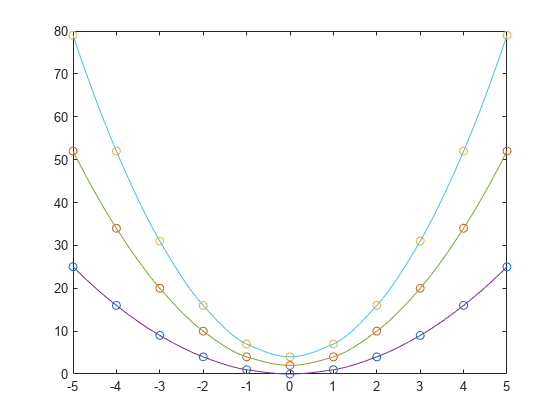interp1
Interpolación de datos 1D (búsqueda en tabla)
Sintaxis
Descripción
vq = interp1(x,v,xq)interp1 utiliza interpolación lineal. El vector x contiene puntos de muestra y v contiene los valores correspondientes, v (x). El vector xq contiene las coordenadas de los puntos de consulta.
Si tiene varios conjuntos de datos que se muestrean en las mismas coordenadas de puntos, puede pasar v como arreglo. Cada columna del arreglo v contiene un conjunto distinto de valores de muestra 1D.
vq = interp1(x,v,xq,method,extrapolation)x. Establezca extrapolation en 'extrap' cuando desea utilizar el algoritmo method para la extrapolación. También puede especificar un valor escalar, en cuyo caso interp1 devuelve ese valor para todos los puntos fuera del dominio de x.
vq = interp1(v,xq)1 a n, donde n depende de la forma de v:
Cuando v es un vector, los puntos predeterminados son
1:length(v).Cuando v es un arreglo, los puntos predeterminados son
1:size(v,1).
Utilice esta sintaxis cuando no le preocupen las distancias absolutas entre puntos.
vq = interp1(v,xq,method,extrapolation)
pp = interp1(x,v,method,'pp')method.
Nota
No se recomienda esta sintaxis. En su lugar, utilice griddedInterpolant.
Ejemplos
Argumentos de entrada
Argumentos de salida
Más acerca de
Referencias
[1] Akima, Hiroshi. "A new method of interpolation and smooth curve fitting based on local procedures." Journal of the ACM (JACM) , 17.4, 1970, pp. 589-602.
[2] Akima, Hiroshi. "A method of bivariate interpolation and smooth surface fitting based on local procedures." Communications of the ACM , 17.1, 1974, pp. 18-20.







